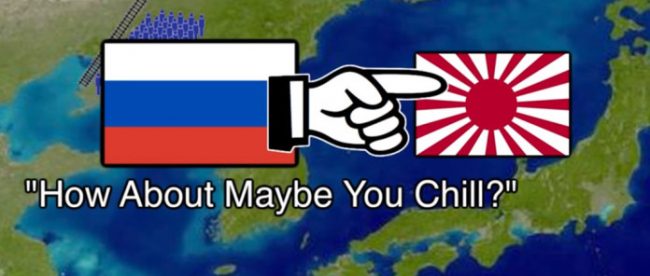The Weekender, October 27, 2017

1) “Why This Cardiologist Is Betting That His Lab-Grown Meat Startup Can Solve the Global Food Crisis” (Inc., 15 minutes, November 2017).
Schulze plucks a petri dish from the incubator, positions it under the microscope, and then invites me to look into the twin eyepieces. “Do you see those long, skinny things? Those are muscle-forming cells,” he says. “These are from a duck that’s off living its life somewhere.” The cells look like strands of translucent spaghetti, with bright dots–nuclei, Schulze says–sprinkled here and there.
He removes that petri dish and inserts another. In it, scattered among the spaghetti strands, are shorter, fatter tubes, like gummy worms. Those, he explains, are mature muscle cells. Over the next few days, they’ll join together in long chains, end to end, and become multicellular myotubes. These chains will form swirls and whorls until they look like the sky in Van Gogh’s Starry Night. Also, Schulze casually notes, “they’ll start spontaneously contracting.”
Wait. Contracting? As in … flexing?
“This is all living tissue. So, yes,” Schulze says.
The idea of a dish full of duck mince suddenly beginning to twitch and squirm makes me shake my head. What’s making duck bits move if not a brain and nerves? Schulze is used to this reaction. “For the past 12,000 years, we’ve assumed that when I say the word ‘meat,’ you think ‘animal,’ ” he says. “Those two ideas are concatenated. We’ve had to decouple them.”
Meat without animals. It’s not a new notion. In a 1932 essay predicting sundry future trends, Winston Churchill wrote, “We shall escape the absurdity of growing a whole chicken in order to eat the breast or wing, by growing these parts separately under a suitable medium.” The basic science to grow meat in a lab has existed for more than 20 years, but no one has come close to making cultured meat anywhere near as delicious or as affordable as the real thing. But sometime in the next few years, someone will succeed in doing just that, tapping into a global market that’s already worth trillions of dollars and expected to double in size in the next three decades. Despite a bevy of well-funded competitors, no one is better positioned than Memphis Meats to get there first.
2) Support Now I Know: As many of you already know, researching, writing, and (save for the daily typo or two) editing Now I Know is a pretty big endeavor on my part. Keeping the project financially sustainable is a battle, and to that end, I’ve tried many different avenues.
One of them — a major one at that — is my ongoing Patreon campaign. It’s an old-style patronage campaign, where readers such as yourself support Now I Know through a monthly pledge. A $5 a month pledge comes out to about 25 cents per article I send; a $1 a month pledge is roughly a nickel. Please consider supporting Now I Know through Patreon by clicking here. It’s entirely optional and you’re under no obligation to do so, so don’t feel bad if you can’t or don’t want to. But if you do, please know it all adds up, and I greatly appreciate your support. Thanks!
3) The Now I Know Week in Review:
Monday: The Gravesite That Sees a Lot of Flights — the two people buried at Savannah/Hilton Head International Airport. On the runway, even.
Tuesday: The Problem with Seven Eights — Why you may not want the number 888-8888.
Wednesday: When Ice Was a Hot Gift — A cool (sorry!) little fad from 1984.
Thursday: Stolen Smile — the story of the theft of the Mona Lisa.
4) “Justin Bieber Made a New Jersey Suburb Lose Its Mind This Summer” (Vulture, October 2017, 13 minutes). Yes, it’s about Justin Bieber. It’s still fascinating.
One Friday afternoon in May, Ava Otterbein, an 11-year-old aspiring singer-songwriter, was taking a break from a performance in front of the Bluemercury makeup store in Montclair, New Jersey, when she turned around to find a stranger standing at her microphone. He was wearing a black Fear of God cap backward and started improvising a rap and joking with a small crowd of confused onlookers. Otterbein’s father was about ready to grab the punk by the neck of his Supreme sweatshirt when the boy pointed to Ava’s guitar and amplifier and asked whose stuff it was. At this point, Ava realized the person at her microphone was Justin Bieber.
For several weeks, Montclair, a suburb half an hour from Penn Station, had been abuzz with rumors that Bieber was hanging around town. There he was at the Starbucks, and the Clifton Commons Mall, and the after-school pickup at Buzz Aldrin Middle School, and a local dance studio’s benefit performance for a dog shelter. One rainy day, around noon, someone saw him sitting alone in a booth at IHOP, without a bodyguard in sight. What was the Biebs doing in Montclair? Was he moving to town? No one knew for sure, but the rumor mill took an extra spin when Bieber canceled the final 14 dates of his world tour — and then showed up at the local Cold Stone on a Saturday night.
WeekenderAdUnits
5) “History of Japan” (Bill Wurtz/YouTube, 9 minutes, February 2016). I don’t know how to describe this well, so I’ll go with eclectic, informative, generally accurate I think (although he editorializes a lot), PG-13, and fast-paced. It’s worth the 9 minutes, for sure. Even if you know a lot about the history of Japan.
6) “The Sock Queen of Alabama” (New York Times, TK, May 2016). The opening paragraph: “Nine years ago, when she was 27 and unhappily selling real estate, Gina Locklear went to her parents with a proposition. She wanted to make socks. Not the basic white socks the family had specialized in, but fashionable socks, with organic cotton and dyes.” A decade later, she’s still making socks.
Have a great weekend!

